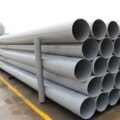average investment > The Rise of Eco-Friendly Fabric Shelters: Constructing a Green Tomorrow
The Rise of Eco-Friendly Fabric Shelters: Constructing a Green Tomorrow
Fabric shelters are rapidly gaining popularity as versatile solutions for a multitude of applications, ranging from temporary storage facilities to event venues. What sets them apart is not only their cost-effectiveness and ease of installation but also their substantial eco-friendly advantages.
This article delves into the eco-friendly facets of fabric shelters, shedding light on why they have become a sustainable substitute for conventional construction methods.
The Appeal of Fabric Shelters In recent years, fabric shelters have witnessed a surge in demand for several compelling reasons. Foremost among these is their affordability. Unlike traditional buildings constructed from steel or wood, fabric shelters are often more cost-effective in both production and installation. This accessibility makes them a practical choice for a wide range of applications, spanning industrial purposes to public events.
Another key advantage is the rapid and straightforward assembly process. Insulated fabric shelters, in particular, can be erected in a fraction of the time it takes to construct conventional buildings. This not only saves time but also reduces labor costs, making fabric shelters an increasingly attractive option for budget-conscious individuals and organizations.
Most significantly, fabric shelters boast a significantly lower environmental footprint compared to their conventional counterparts. These structures are typically constructed using lightweight, recyclable materials, which leads to decreased emissions during transportation. Moreover, their energy-efficient design minimizes waste, making a substantial contribution to overall sustainability.
The Significance of Materials When exploring the eco-friendly aspects of fabric shelters, the choice of materials plays a pivotal role. Typically, these shelters are crafted using high-quality, durable fabrics like polyethylene, vinyl, or specialized textiles tailored for specific applications. Some forward-thinking companies have taken a step further by incorporating recycled materials and organic fibers into their designs.
Eco-friendly materials serve a dual purpose. Firstly, they are often sourced through sustainable methods, ensuring responsible production processes. Secondly, these materials are designed to be recyclable or biodegradable, fostering a closed-loop lifecycle that minimizes waste. As a result, the overall carbon footprint of fabric shelters is considerably reduced, making a commendable contribution to environmental preservation.
Consider, for instance, the use of recycled materials, such as repurposed plastics or textiles, in the fabric production process. Not only does this reduce reliance on fresh raw materials, but it also provides a second life to items that might otherwise end up in landfills. Similarly, employing organic fibers like hemp or bamboo not only supports sustainable agriculture but also yields a biodegradable end product.
The Power of Energy Efficiency Energy efficiency stands as another cornerstone of the eco-friendly appeal of fabric shelters. Notably, the incorporation of natural lighting is a standout feature. Many fabric shelters are designed with translucent materials that permit sunlight penetration, thereby reducing the need for artificial lighting. This simple yet effective design choice not only enhances visibility but also reduces electricity consumption during daylight hours.
Insulation plays a crucial role in evaluating the energy efficiency of these structures. Fabric shelters are often well-insulated, thanks to materials engineered to retain heat in cold weather and reflect sunlight during warmer months. This level of insulation diminishes the requirement for additional heating or cooling systems, consequently reducing energy usage and minimizing carbon emissions.
The advantages of natural lighting and superior insulation also extend to the realm of cost savings. Reduced reliance on artificial lighting and temperature control systems naturally leads to lower energy bills. Over time, these savings can be substantial, offering economic incentives that complement the environmental benefits.
Durability and Longevity Longevity is a pivotal factor when assessing the eco-friendliness of any structure, and fabric shelters are no exception. The use of durable materials like high-quality, UV-resistant fabrics ensures that these shelters can withstand the test of time. The longer a shelter endures, the less frequently it needs replacement. This results in a reduction of waste, as fewer materials are required over the shelter’s lifespan.
Resistance to external elements is another crucial attribute. Many fabric shelters are engineered to withstand a variety of weather conditions, from heavy rain to strong winds. They are also designed to resist decay and corrosion, further extending their lifespan. The cumulative effect of these features is a reduced frequency of maintenance and replacements, thereby contributing to sustainability.
A longer lifespan directly correlates with a reduced environmental impact. Fewer cycles of assembly and disassembly mean less energy spent on production, transportation, and setup. This has a ripple effect on various aspects of environmental sustainability, from reduced emissions to lower levels of waste material entering the ecosystem.
Efficient Transportation and Assembly Transporting materials is a significant source of carbon emissions in the construction sector. Fabric shelters, however, offer a compelling advantage: their lightweight materials. Being light, these shelters require less fuel for transportation, effectively lowering greenhouse gas emissions. This makes the overall lifecycle of fabric shelters more eco-friendly right from the outset.
The advantages of fabric shelters extend beyond transportation. The assembly process itself is remarkably swift and efficient. Skilled workers can erect a fabric shelter in a fraction of the time it takes to construct a traditional building. This not only reduces labor costs but also minimizes the use of machinery. Less machinery usage equates to less energy consumption, aligning with the eco-friendly attributes of fabric shelters.
It’s worth noting that the installation process is resource-efficient as well. The straightforward design and pre-fabricated components mean that fewer construction materials are required, reducing waste and lessening the structure’s overall environmental footprint.
Versatile Functionality These adaptable structures serve a myriad of purposes, from providing temporary storage solutions to acting as venues for events and even agricultural applications. Their versatility accommodates a range of uses that traditional structures often struggle to accommodate as easily.
This flexibility is not merely a convenience; it also has environmental ramifications. The capacity to repurpose a single fabric shelter for various needs negates the need to construct additional, specialized structures.
For instance, a fabric shelter initially employed for storage can be easily repurposed as a venue for a community event. Similarly, the same structure could serve as a makeshift greenhouse or animal shelter in an agricultural setting.
In Conclusion In the endeavor to build a more sustainable future, fabric shelters emerge as an enticing option deserving of serious consideration. Given the attributes explored in this article, fabric shelters present an appealing alternative for those seeking responsible choices in construction and spatial solutions. They offer a blend of affordability, utility, and, most importantly, environmental responsibility.
If you are in search of a versatile, cost-effective, and environmentally responsible shelter solution, it’s high time to explore the possibilities that fabric shelters can offer. Make a choice that not only fulfills your immediate needs but also contributes to a greener, more sustainable future.




